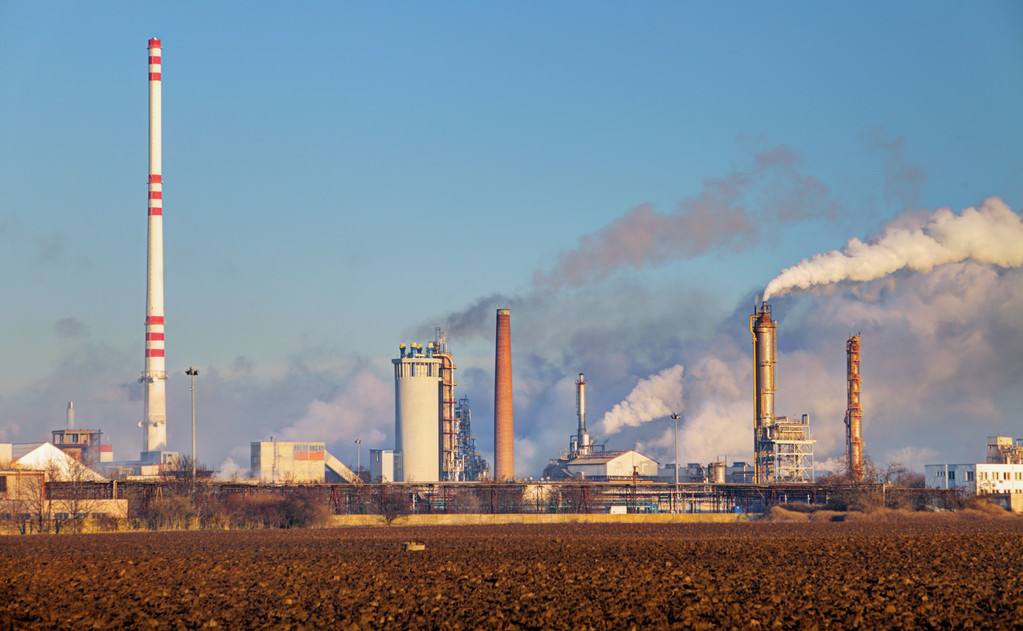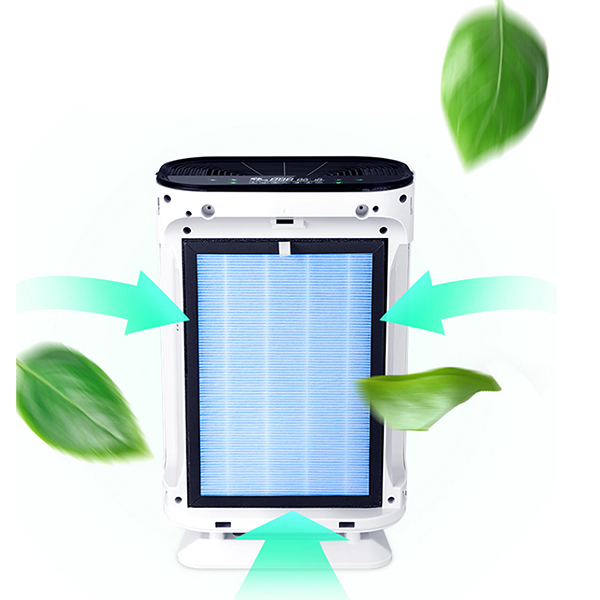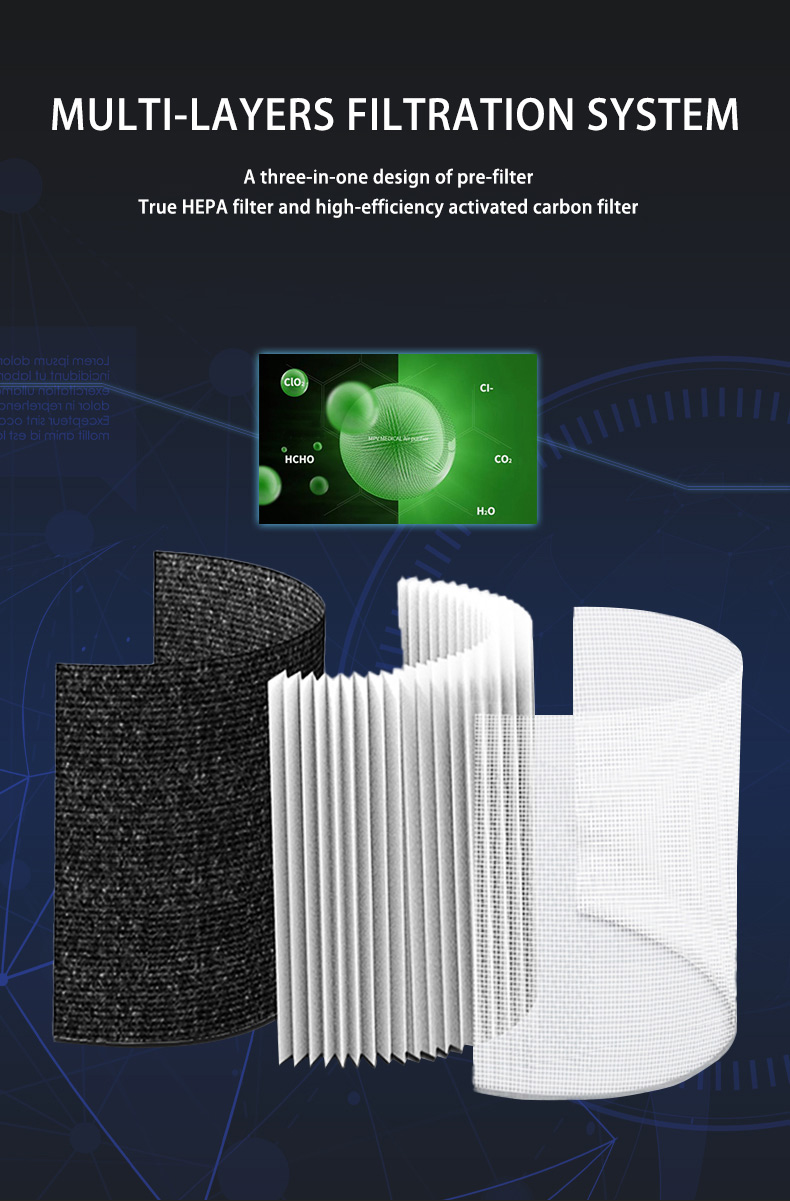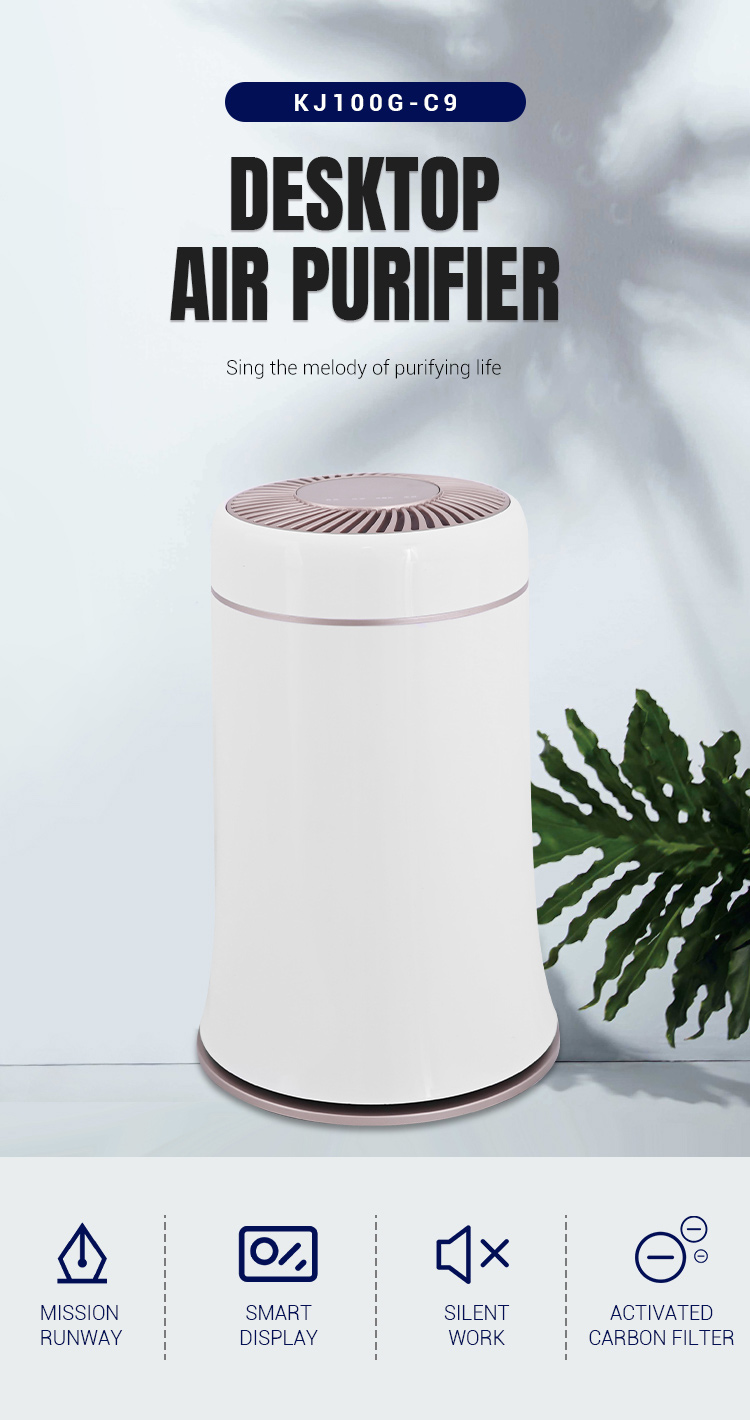Air pollution is complex and diverse in the environment we live in. The most common pollutants, such as second-hand smoke, fumes from burning wood and cooking; gases from cleaning products and building materials; dust mites, mold, and pet dander – contribute to a harsh indoor environment and can have adverse effects on the body.
Therefore, there are currently two main types of air purifiers. One is for PM2.5 particles, and PM10, PM2.5, and 0.3 micron particles are used as the reference for purification efficiency. Because fine particles 10 microns or smaller in diameter can penetrate deep into the lungs, breathing them for even just a few hours is enough to aggravate the lungs and trigger an asthma attack. Inhaling them has also been linked to heart attacks in people with heart disease. Studies have shown that long-term exposure to high levels of particulate matter may even lead to bronchitis, impaired lung function and premature death.
The other is mainly for the gaseous pollution of formaldehyde, odor TVOC, and volatile organic compounds (VOCs) including formaldehyde are released into the air from adhesives, paints and cleaning products. Prolonged human exposure to VOCs can cause irritation of the nose, throat, and eyes; headaches, nausea, and damage to the liver, kidneys, and nervous system.
Therefore, more and more people choose to buy air purifiers to improve indoor air quality and protect the respiratory health of their families and themselves. So are air purifiers really worth buying? What is the purification effect of the multifunctional and intelligent air purifier?
When it comes to purification effects, you need to pay attention to the purification methods and types of air purifiers. At present, air purifiers mainly use the following five purification methods:
Mechanical filter: The mechanical filter mainly uses the built-in filter screen/filter element to achieve physical purification effect. Purifiers use fans to force air through a dense web of fine fibers that trap particles. Filters with very fine meshes are called HEPA filters, and HEPA rated 13 collects 99.97% of particles 0.3 microns in diameter (such as particulates in smoke and volatile organic compounds in paint). HEPA filters can also remove larger particles, including dust, pollen, and some mold spores suspended in the air.
At the same time, they are disposable, and filter elements need to be replaced every 6 to 12 months. Regular replacement of the filter can also prevent secondary air pollution that can occur with an air purifier.

Activated carbon filters: Unlike mechanical filters, these filters use activated carbon to trap certain types of gases, including some odor-causing molecules. Since an activated carbon filter cannot fight particles, many air purifiers will have both an activated carbon filter and a screen to capture particles. However, activated carbon filters also saturate the filtration of contamination and therefore also need to be replaced.
Negative ion generator: The negative ions released by the negative ion generating device can charge the dust, germs, spores, pollen, dander and other particles in the air, and then be adsorbed by the discharge integrated device, floating in the air with positively charged smoke and dust for electrode neutralization , so that it is naturally deposited, so as to achieve the effect of dust removal.
At the same time, we need to pay attention to the use of compliant negative ion generators that have passed national standards. Because negative ions are colorless and odorless, if you use non-compliant negative ion purifier products, it is easy to generate ozone higher than the national standard, which is not good for human health!
Ultraviolet sterilization (UV): Ultraviolet rays with a wavelength of 200-290nm can penetrate the shell of the virus, cause damage to the DNA or RNA inside, and make it lose the ability to reproduce, so as to achieve the effect of killing the virus. Of course, ultraviolet disinfection must ensure the accumulation of ultraviolet radiation. Therefore, consumers also need to understand the air purifier equipped with UV ultraviolet disinfection module when purchasing.
Photocatalytic/photocatalytic technology: Uses UV radiation and photocatalysts such as titanium dioxide to generate hydroxyl radicals that oxidize gaseous pollutants. In simple terms, it uses a catalyst to form a catalytic reaction under the irradiation of ultraviolet light to decompose formaldehyde into carbon dioxide and water. Harmless treatment of pollution can effectively avoid secondary air pollution, and at the same time achieve the purpose of sterilization and deodorization.
When consumers buy air purifiers, they should focus on the function of removing formaldehyde or removing PM2.5 particles according to their own needs, so as to pay attention to their corresponding purification indicators. Of course, there are also air purifiers on the market that are compatible with both. For example, LEEYO A60 uses multiple purification methods to filter out various pollutants, HEPA high-efficiency filter, activated carbon for aldehyde removal, negative ion dust reduction, ultraviolet sterilization, photocatalysis to prevent secondary pollution, and at the same time, it greatly improves the sterilization and disinfection function and reduces the microorganisms on the filter. Breeding can also give us more protection to a certain extent.
Post time: Sep-07-2022





